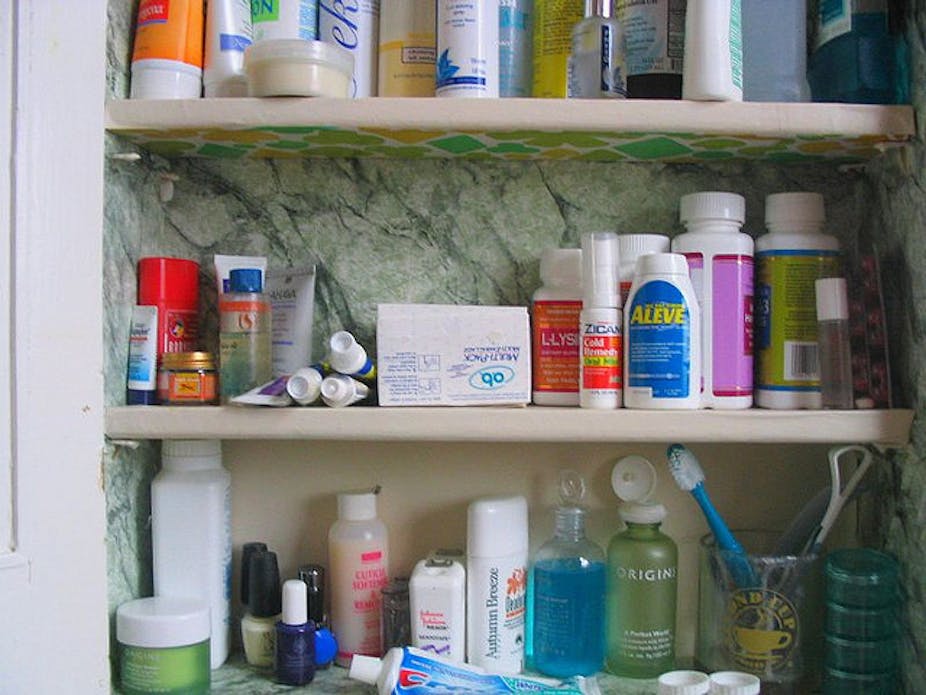The risk we’ll fall short of essential medicines has increased dramatically over the past decade, largely due to policy shifts in patent regulation and a boom in pharmaceutical innovation that began in the 1980s.
Rates of drug shortages in Australia haven’t been recorded but the trends are likely to be similar to the United States. In 2001 there were 120 individual medicine shortages in the US, dropping to 58 in 2004 and steadily rising to at least 220 last year.
The medicines most vulnerable to short supply are the minimally profitable “generic” drugs – particularly injectable medicines that are expensive and challenging to make.
Market forces and scales of economy have seen the total global number of manufacturing plants for these “old” off-patent drugs dwindle and move to mega-factories in countries such as India and China, where labour is cheap and the markets are already huge and expanding. With one batch failure or factory fault, global supplies are interrupted.
In contrast, pharmaceutical companies invest heavily in new drug innovation and developments are focused on maximising profits from patents. They have extensive resources behind their manufacturing facilities, so patented drugs are almost never in short supply.
Medicine innovation
The last century of medical innovation in Australia and and its translation to treatments at the bedside has been impressive. And it’s left us with one of the best and most cost-effective health-care systems in the world.
We enjoy this position because of the hard work of countless scientists and clinicians, and the clever strategic decisions that our politicians and leaders have made over those tumultuous 100 years:
CSL was a government body, formed in 1916 to translate medical findings into vaccines and therapies for Australian populations.
The PBS was established in 1948 to ensure the “timely provision” of essential medicines to all Australians.
The Therapeutic Goods Administration (TGA), the PBS and the National Medicines Policy all focus on the timely provision of high-quality medicines.
These agencies traditionally focused on sustaining a viable medicines industry in Australia. However, over the past decade, there has been a paradigm shift to focus on health-care innovation. This shift in focus, along with a fundamental change in strategic health policy and the establishment of the Australia-US Free Trade Agreement (AUSFTA), has left the viability of day-to-day clinical care relatively unattended.

The National Medicines Policy says it wants to facilitate a “viable medicines industry” but, in reality, it appears to prioritise the funding of patented “miracle cures” or life-prolonging treatments, which are incredibly costly.
It is this imbalance between health-care innovation and sustainability that is at the very core of the current international drug shortage.
The shortage of essential medicines in Australia over recent months – including the injectable drugs doxorubicin (to treat certain types of cancer), benzylpenicillin (a common antibiotic), labetalol (for high blood pressure) and adrenaline – shows a real vulnerability in Australia’s health system that could escalate tomorrow, next week or a couple of years down the track.
The Commonwealth government’s changes to the PBS in 2005 have served to protect the high prices (and pharmaceutical company profits) of newly patented medicines. The PBS changes have also forced down the price of older, off-patent medicines, which are already cheap. And you get what you pay for – spending less on already cheap drugs probably means an increased potential for quality compromises.
Although the reasons for these 2005 PBS changes were valid, they seem to have had other perverse consequences, such as weakening in supply of already cheap essential drugs and perpetuating a process of pinching pennies (for cheap generics) and spending pounds (for patented drugs).
It will be telling to watch the US deal with its medicine supply problems, which are much more acute than ours. Obama has directly intervened and the Food and Drug Administration has geared up to deal with shortages, which may have global repercussions (and could be a contributing factor to Australia’s current shortage of doxorubicin).
There is talk of expanding US manufacturing capacity of these cheap drugs, of regulating industry to ensure shortages are predictable, and some crazy talk of starting not-for-profit pharmaceutical companies, reminiscent of the birth of CSL in Australia 96 years ago.
This article is, of course, a simplification of some very complex international issues. Many more conversations are needed to help us navigate through these changing times.
But one thing is clear. If future generations of Australians are to have the same high level of health care as we do today, scientists and policy makers need to find the right balance between innovation in health care treatments and the much less sexy area of medicine sustainability.

